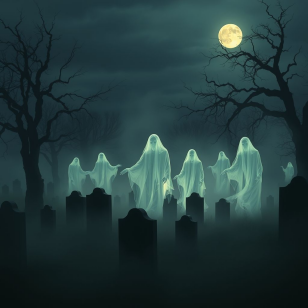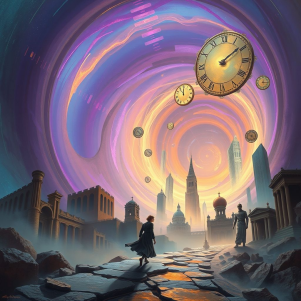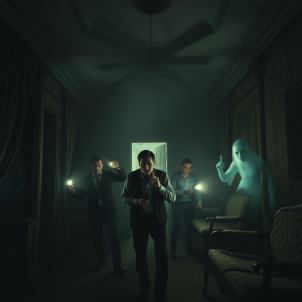
For centuries, people have reported seeing ghostly apparitions, from haunted houses to paranormal encounters. While many believe these sightings are evidence of the supernatural, others argue that there must be a scientific explanation. In this article, we’ll delve into the science behind ghostly apparitions and explore the possible reasons behind these paranormal sightings.
The Psychology of Ghost Sightings
One of the main factors contributing to ghost sightings is psychology. Our brains are wired to recognize patterns, and in situations where we’re under stress or experiencing high emotions, we may be more likely to see things that aren’t there. This phenomenon is known as apophenia, where we perceive meaningful patterns or images in random or meaningless data. For example, seeing a ghostly figure in a shadow or a strange noise in a creaky old house.
The Role of Neuroscience
Neuroscience also plays a significant role in ghost sightings. Research has shown that certain areas of the brain, such as the temporal lobe, can be responsible for paranormal experiences. The temporal lobe is involved in processing sensory information, and abnormalities in this area can lead to hallucinations and other unusual experiences. Additionally, the brain’s default mode network, which is responsible for our sense of self and identity, can also contribute to ghost sightings. When this network is active, we may be more likely to experience strange and unexplained phenomena.
Environmental Factors
Environmental factors can also contribute to ghost sightings. For example, strange lighting, odd smells, and unusual sounds can all create an atmosphere that’s conducive to paranormal experiences. In addition, certain types of architecture, such as old buildings with strange layouts or unusual features, can also contribute to ghost sightings. The concept of “infrasound” is also worth mentioning, which refers to sound waves that are below the range of human hearing. These sound waves can cause strange vibrations and sensations, which can be misinterpreted as ghostly activity.
The Power of Suggestion
The power of suggestion is another important factor to consider when it comes to ghost sightings. If we’re told that a certain location is haunted, we may be more likely to experience strange occurrences or see things that aren’t there. This is known as the “expectancy effect,” where our expectations and beliefs influence our perceptions. For example, if we’re on a ghost tour and we’re told that a certain room is haunted, we may be more likely to feel strange or see ghostly apparitions, even if there’s no actual evidence of paranormal activity.
Conclusion
In conclusion, while ghostly apparitions can be a fascinating and intriguing topic, the science behind paranormal sightings is complex and multifaceted. By understanding the psychological, neuroscientific, and environmental factors that contribute to these experiences, we can gain a deeper insight into the nature of ghost sightings. Whether or not you believe in ghosts, it’s clear that our brains and surroundings can play tricks on us, leading to strange and unexplained experiences. So next time you hear a strange noise or see something out of the corner of your eye, remember that there may be a scientific explanation behind it.


